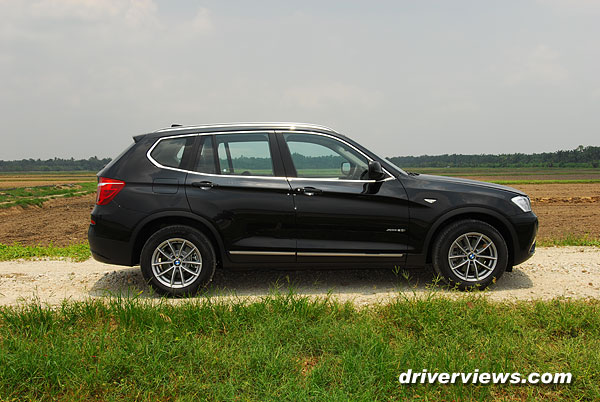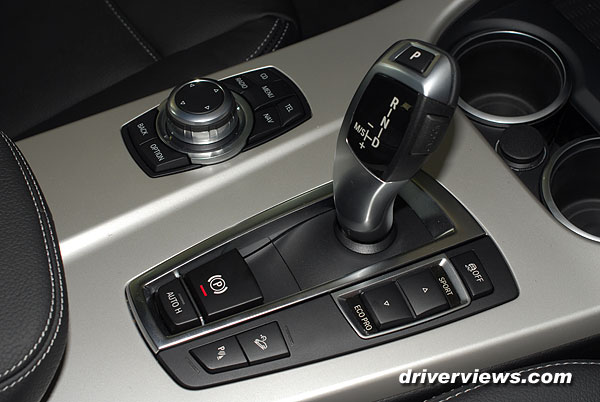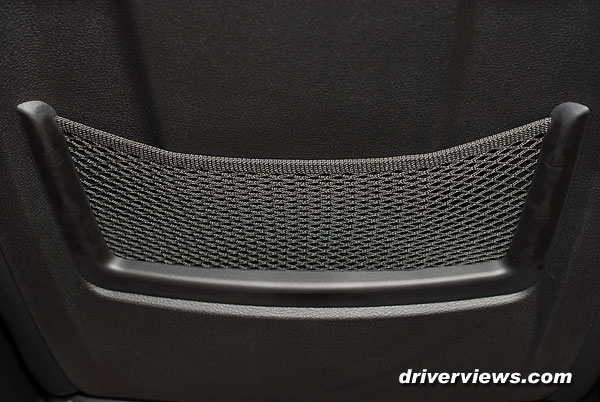Two years had passed since our last test drive with the E83 X3 20d which is one of the middle child of BMW’s X Series for its SAV stable. I recalled that we were quite satisfied with the performance and driving dynamics of the diesel powered E83 X3 20d. Our beef was that the standard equipment levels were spartan for a BMW while the car’s design was dated and was well overdue for a makeover. Since then, the X3 has been revamped with subtle but significant design changes while maintaining a matured outlook. Crucially, its tail lamps which gave an outdated look in the E83 had been redesigned, matching the current tail lamps on the X1, and the new 3 and 5 series. The double round headlights feature LED daytime running lights.
In terms of dimensions the F25 X3 appears larger than its predecessor. Its wheelbase is 2,810mm while its external length and height are 4,648mm and 1,661mm respectively. There should be more than sufficient room even for taller passengers as its internal width is around 1,400mm and the seat to roof height is around 1,000mm. The F25 X3 was first launched in Malaysia in the first quarter of 2011. Presently, two models are available for the Malaysian market, which is the petrol powered xDrive20i and the diesel powered xDrive20d. At this time both models are fully imported as complete built up units (CBU).
The test car which is the X3 xDrive20i has a comprehensive list of safety features. These include having multiple airbags, dynamic stability control, dynamic traction control, hill descent control, brake assist, isofix child seat attachment and electro mechanical parking brake. Compared to the E83, this F25 X3 is also better specified as it comes with the iDrive, 8.8 inch LCD display, park distance control and navigation system professional. The car’s instrument panel is a mix of analogue and LCD display with a wealth of information available on the car from the on board computer at your fingertips.
Some of the latest BMW Efficient Dynamics features are in this car. These include the automatic stop/start function, the newly developed eight speed automatic transmission, the new N20 twin power turbo powerplant, electric power steering, brake energy regeneration and the Eco Pro mode under the Driving Experience Control.
DRIVING IT
As the driver you will seat in an elevated position which gives you a clear view ahead. The nevada leather seats with contrast stitching are firm and comfortable providing good overall support. This test car comes with the basic three spoke leather steering wheel with multifunction buttons on each side to configure and control the cruise control and in car entertainment.
Forced induction is now the name of the game as manufacturers attempt to squeeze as much power and torque from smaller engine displacements. This X3 XDrive20i is no exception as it is powered by the N20 engine block with twin scroll turbocharger 4 cylinder 1,997cc petrol engine producing a max power of 135kW (184hp) @ 5,000rpm and a max torque of 270Nm @ 1,250 – 4,500 rpm. In the past, such performance levels were only achievable from larger engine displacements.
Ignition is keyless, so long as you have the car keys within designated proximity. Interestingly, my co driver managed to park the car while I was out of the car a couple of feet away with the car keys in my pocket. We noted that for a petrol powered car, the engine clatters during idling. In fact, based on casual listening, this clattering was comparable to the diesel powered X1 xDrive20d which we had driven last week.
During a quiet drive at night, the relatively industrial sounding engine note was even more apparent from the cabin as the car shifted through the gears. We were expecting better refinement since the N20 is an updated petrol powered engine block. This maybe a sample specific issue, or perhaps there is still room for further improvement to make the N20 a better refined performer?
Performance wise, the N20 engine block performed satisfactorily. There was no turbo lag and the car’s response off the mark was commendable. Floor the throttle and there was loads of power and torque to propel the car forward. Based on the specs, the car is capable of achieving 0-100km in 8.6 seconds.
The test car comes with BMW’s Driving Experience Control which offers 4 settings, Eco Pro, Comfort, Sports and Sports +. To improve overtaking maneuvers, I would suggest engaging the Sports mode as this improves the response of the engine by notch. During casual drives, the Eco Pro or Comfort setting performed adequately to enable a good compromise between performance and fuel efficiency.
Engaging the Sports mode raises the rpm by a notch, firms up the steering and suspension. The car feels a bit more planted and I suspect this setting would probably appeal more to the BMW purists. Under the ‘normal’ Eco Pro or Comfort modes, the electro mechanical steering was light, gave good feedback and was accurate. Comparing to the heavier feel of the X1, steering this car was a breeze.
Ride quality during Eco Pro and Comfort settings was impressive. In fact, I would rate the ride quality of this X3 being better than the X6 which I had tested last year. The car never felt soggy in these settings and during firmer setting like Sports mode, there was no harshness nor that bouncy feeling around the seats.
There is still room for improvement in terms of sound insulation for this X3. Intermittently during our test drive on the freeway, there was some wind noise creeping into the cabin. External noises from passing vehicles and even from the engine are a bit more apparent than preferred and hopefully further improvements in sound insulation can be made on this X3.
This X3 came equipped with Pirelli Cinturato P7 17 inch 225/60 R17 runflat tyres. These tyres gave a good account of itself with good levels of grip and an impression of better durability. However, I need to qualify that we only had a few days with this new car and it would be interesting to see whether this impression on durability comes to past in the long run.
Our test drive involved a total distance of around 600km in this relatively new car. BMW’s specs stated an average fuel consumption of around 7.5 litres per 100 km (combined). At the beginning, our test drive involved mostly town drives and we averaged around 12 litres per 100 km. Subsequently, most of our mileage was on the freeway and some trunk roads and we averaged around 10 litres per 100 km. These figures are quite good for this X3 since it is still a new car and taking into account the size/weight and the relatively ‘small’ engine displacement.
In line with the move to reduce fuel consumption and emissions while idling, this X3 is equipped with an automatic stop/start function. By default this feature is activated upon ignition and can be turned off manually via a switch next to the ignition button. This feature will need some time to get used to as common belief is that frequent stop/starts is not good for the health of the engine and will drain battery power.
During driving, this automatic stop/start feature is activated once you step on the brakes and stop the car for a couple of seconds. The engine will then switch off automatically. The car will restart immediately once you release the brake pedal. I noted the car will restart itself during prolonged stops which last around 30 seconds or so. So far during the entire test drive we did not encounter any situation whereby the car refused to restart after it is switched off via this feature.
This X3 is equipped with BMW’s new eight speed automatic transmission. BMW claims that with this new automatic transmission, fuel consumption is now comparable with manual transmission cars. A lot of engineering has gone into this new automatic transmission as it has to cope with the automatic stop/start function. I noted that throughout the test drive, gear shifts were smooth, quite discreet without jerkiness. The absence of pedal shifters on this test model took away a bit of the fun side in shifting the gears manually via steptronic.
We did take the test car for a brief drive off road. The road conditions were not particularly demanding and the car was able to cope without any problems. The xDrive system which automatically distributes drive power to the axles in seconds ensured that the required wheels of the car has optimum traction.
As a SAV, the car is designed with generous cargo space. The specs stated cargo space of around 550 litres to 1,600 litres (with rear seats folded). There are various fastening points to further secure your cargo throughout your journey. The rear seats can also be folded in a 40:20:40 configuration.
In car entertainment is via a Hi Fi Loudspeaker System, with 12 loudspeakers and 205 Watts. The sonic quality is good and it leaned towards warmer tones with a solid bottom-end. The Lights Package ensured that passengers in this X3 will not be left in the dark at night. Reading lights are available for all passengers while for the rear passengers there a bonus of footwell lights.
The F25 X3 is a major step up from its predecessor in many ways since there is quite a wide gulf in engineering and technology between the two cars. This X3 retains BMW’s legendary driving experience and prospective new owners will get to experience BMW’s latest Efficient Dynamic features. Nevertheless, going by this test drive experience, there is still some work to do to make the new N20 powerplant a more refined performer.
MAINTENANCE
| Full Tank: | 67 litres @ RM127 (Ron 95) | ||||
| Insurance: | n/a | ||||
| Road Tax: | RM438 per annum | ||||
| Standard Service: | Free service for first 3 years | ||||
| Warranty: | 3 Years or 60,000km whichever is earlier | ||||
These are estimated costs applicable to Malaysia only which are subject to change without notice. Road Tax is for private registration in Peninsular Malaysia. Standard/scheduled service excludes additional or specific service/repairs requested. Please reconfirm these terms and costs with an authorized BMW dealer.
VITAL STATISTICS
| Engine: | BMW Twin Power Turbo four-cylinder petrol engine | ||||
| Capacity: | 1,997cc | ||||
| Max Output: | 135 kW (184hp) @ 5,000 rpm | ||||
| Max Torque: | 270 Nm @ 1,250-4,500 rpm | ||||
| Top Speed: | 210 km/h | ||||
| Acceleration 0-100km: | 8.6 sec | ||||
| Fuel Consumption: | 7.5 litres per 100 km (combined) | ||||
Source: BMW Brochure
Note: Please reconfirm the above specifications with an authorized BMW dealer
SOUNDS
Click on these to sample sounds from the car!
























